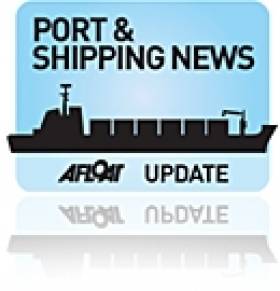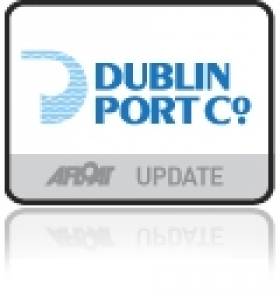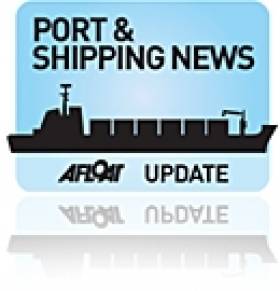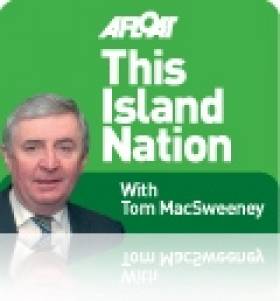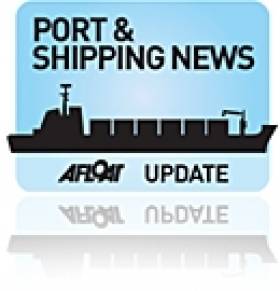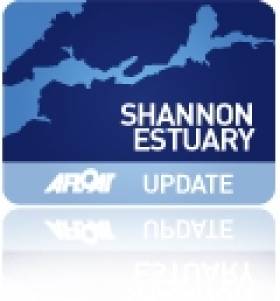Displaying items by tag: Shipping
Irish Shipping & Port Activity Rose Up 11% – iShip Index
#shipping – Irish shipping and port activity rose up 11% in the second quarter of 2013 when compared to the corresponding period of 2012, according to the latest quarterly iShip Index and quarterly traffic review published today by the Irish Maritime Development Office (IMDO). The iShip index was at 880 points equalling its highest level since 2008. The latest analysis also indicates that four of the five principal domestic freight segments grew in the second quarter of 2013.
A large share of the growth in the last quarter has been driven by demand in the dry bulk sector which has been the strongest performing freight segment over the last three quarters, growing by 26% to 4.08 million tonnes in Quarter 2. Dry bulk shipments, typically grain, agricultural products and aggregates, make up the largest volume weighting of the iShip Index. Dry bulk commodities, such as coal, animal feed and fertilizers, all showed increased volume imports at Irish ports during the second quarter.
Roll on/roll off trailer volumes increased by 8% to 229,772 units. The majority of roll on/roll off traffic moves between Ireland and Great Britain, our largest trading partner. This trade grew by 6% as demand conditions in the UK improved. The latest economic data for the UK shows signs of a recovery which has translated into improved freight market conditions over the summer months. The rise in this sector was also helped by a stronger performance in direct continental volumes (up 26%) which were also boosted by additional vessel capacity on some of the direct continental routes earlier this year.
Container traffic (lift on/lift off) fell by 1% to 147,203 units. This sector is a key distribution channel for Irish exports and imports to long-haul markets, including Asia and the US, as well as Europe. Exports, as a subset of the total container volume, were flat as global economic conditions continued to impinge on demand. Nevertheless, strong volumes were reported in the export of meat and dairy products.
Elsewhere, imports of petroleum based commodities in tanker vessels for use in the domestic market increased by 4% to 2.58 million tonnes. Break bulk, which is largely weighted towards imports of construction related commodities, increased by 7%.
O'Brien Backing Dublin Shipping Services Hub Scheme
#DublinPort - Billionaire businessman Denis O'Brien is behind an ambitious plan to make Dublin Port an international shipping services hub for the maritime industry, as The Irish Times reports.
The scheme has been presented to Dublin City Council as part of its call for submission on rezoning land in Dublin's Docklands area, already home to the Irish Financial Services Centre (IFSC).
It appears that the plan put forward by a company called ISSC Dublin - of which O'Brien is understood to be a financial backer - aims to do for shipping what the IFSC did for the international finance sector.
The Irish Maritime Development Organisation (IMDO) and IDA Ireland are also said to be involved in the ambitious project, which has the potential to create thousands of jobs.
The Irish Times has much more on the story HERE.
Irish Shipping Volumes Up during in First Quarter 2013
Irish shipping and port activity rose by 2% in the first quarter of 2013 when compared to the corresponding period of 2012, according to the latest quarterly iShip Index published today by the Irish Maritime Development Office (IMDO). The upturn in volumes is as a result of unprecedented levels of imported animal feed which otherwise masked a continued downturn in key container traffic through Irish Ports. The latest analysis indicates that two of the five principal freight segments grew in the first quarter of 2013.
The dry bulk sector has been the strongest performing freight segment over the last quarter, growing by 10% to 4.2 million tonnes. Dry bulk shipments, typically grain, agricultural products and aggregates, make up the largest volume weighting of the iShip Index. Irish ports have seen record levels of animal feed passing through their quays in recent months as farmers struggle with unseasonably poor weather conditions. Animal feed imports increased by 80% compared to the same quarter last year, continuing the double-digit surge in demand for these commodities since last July. We also noted a 13% increase in coal shipments during Quarter 1 that we again attribute to poor prevailing weather conditions.
Container traffic (lift on/lift off) fell by 6% to 140,681 units, reaching its lowest level for over a decade. This sector is a key distribution channel for Irish exports to long-haul markets, including Asia and the US, as well as Europe. Exports, as a subset of this total volume fell by 8%, the largest quarterly fall since Q3 2009, representing four consecutive quarterly declines in container export volumes. This is primarily due to weaker conditions in key global markets coupled with slower growth across the Eurozone impacting on demand. Our data initially identified a slowdown in export growth starting to emerge in Q3 2011. Imports of container based commodities into Ireland also fell by 5% in the 1st quarter as weaker industrial and consumer sentiment appeared to prevail. This is the 21st consecutive quarterly decline in import traffic with little indication of any immediate recovery during 2013.
Roll on/roll off trailer volumes increased by 1% to 204,708 units. The rise in this sector was helped by a stronger performance in direct continental services (up 19%). Traffic to and from Great Britain, our largest trading partner, fell 2% as demand conditions in the UK remained largely subdued. The latest economic data for the UK, however, suggests some signs of a recovery which may translate into improved market conditions over the latter half of the year.
Elsewhere imports of petroleum based commodities in tanker vessels, declined by 1% to 2.53 million tonnes. Break bulk, which is largely weighted towards imports of construction related commodities, showed no signs of improvement.
Galway Port Expansion '99 Per Cent Ready To Go'
#GalwayHarbour - Plans for the expansion of Galway Harbour are "99 per cent ready to go", as the Galway Independent reports.
Eamon Bradshaw, CEO of the Galway Harbour Company, said that the application for the new development would be submitted by the end of June.
As previously reported on Afloat.ie, the scheme will be the first Irish project lodged under new legislation that provides for planning permission on the grounds of "overriding public interest".
Bradshaw says that the necessary Natura Impact Statement has been completed, and economic and financial details were now being finalised for the redevelopment project at the harbour, recently recognised by the Government as a 'port of regional significance'.
Should it get the go-ahead from An Bord Pleanála, the new harbour will extend almost 1km out to sea with 660m of quay berth and plenty of space for cargo and container ships, oil tankers, fishing vessels and passenger ships.
The project will be completed in four phases, with the first €50 million phase extending the port by some 57 acres to accommodate a greater number of commercial ships and modern cruise liners.
Galway City Council recently granted extra time to the Galway Harbour Company for pre-expansion demolition works in the docks area.
The Galway Independent has much more on the story HERE.
#MarineNotice - Marine Notice No 17 of 2013 from the Department of Transport, Tourism and Sport (DTTAS) advises on two minor amendments to ship security plans and on-board retention of security records, in accordance with Regulation (EC) No 725/2004 and the International Ship and Port Facility Security Code (ISPS Code).
Firstly, and with immediate effect, there is no requirement to inform the Marine Survey Office of minor amendments to ship security plans.
Such minor amendments include amendments to contact details of shipping company personnel, and may also include other minor adjustments to the text. Minor amendments are such that the structure, scope and implementing measures contained in the plan are not amended.
If in any doubt the company security officer should contact the Marine Survey Office for further guidance. All amendments should be recorded appropriately.
Secondly, the DTTAS advises that, with immediate effect, the minimum period for the retention of security records on board (relating to drills, exercises, declarations of security, etc) is reduced to three years.
#Navigation - Marine navigation systems in yachting and shipping are 'primitive' compared to the standard in air travel, according to an electronics expert.
As Yachting Monthly reports, Martin Bransby of the UK's General Lighthouse Authorities said that "demands on marine navigation are only getting tighter, yet electronic systems at sea a primitive compared to those used in air travel. This needs to change."
Bransby made his comments following a trial to tackle the problem of rogue GPS jammers in the North Sea by the lighthouse authorities at Trinity House.
The new PNT (positioning, navigation and timing) method uses new technology to transmit critical data in the even of the loss or failure of GPS, which is vulnerable to interference from a variety of sources, both environmental and deliberate.
"The more dependent we become on electronic systems, the more resilient they must be," said Bransby. "Otherwise, we face a scenario where technology is actually reducing safety rather than enhancing it."
These new trials come after news that the Irish Coast Guard is collaborating on a new system of marine monitoring that will help detect drifting or rogue vessels in international waters before they become a problem for individual states - such as the 'ghost ship' MV Lyubov Orlova which as of last week was still adrift heading eastwards somewhere in the North Atlantic.
#ports – None of the nine state owned Irish ports are to be privatised but local authorities are to become shareholders in regional ports and private investment will be welcome too, according to the National Ports plan launched this afternoon.
Plans to radically overhaul Ireland’s commercial ports and give Government a more hands-on role in the maritime ports sector were unveiled by Minister for Transport, Tourism & Sport Leo Varadkar.
The policy sees four major areas of reform and a warning that much more is expected of every port in terms of its commercial return to the state.
Up until recently a dividend has only been paid by Dublin Port but recently other Ports have begun to pay dividends too, Varadkar told reporters this afternoon.
The new National Ports Policy aims to harness the potential of every port in Ireland. Shareholders will be encouraged to take an activist approach to managing their ports to ensure the State gets best value from these crucial facilities, whether that shareholder is the Government or the local authority.
Previous policies have not recognised the huge diversity among the 19 ports that handle commercial freight. The core objective of the new National Ports Policy is to facilitate a competitive and effective market for maritime transport services.
Although ports will be key players in Ireland's future economic recovery the significance of the ports sector as part of national infrastructure is not well appreciated but this policy says Varadkar is 'a championing document for all ports'.
Ports are to be designated in different tiers. Dublin Port, Port of Cork and Shannon Foynes are Tier 1 and ports of national significance. There is also a second tier of nationally significant ports namely; Waterford and Rosslare. With 95% of everything coming into this country arriving by ship, these five ports are the life blood of trade and play a significant role in the well being of the State.
“Our commercial ports are vital to our economic recovery and to future economic growth. They are the gateways for most of our merchandise trade, and for significant numbers of tourists and passengers. This new ports policy encourages each port, large or small, to develop its full potential to ensure that each one can contribute to further growth in the ports sector,” the Minister said.
These ports are charged with leading the response to national capacity requirements, something that is long overdue because port capacity has not been matching growth in traffic for either unitised and non–unitised cargo.
The policy follows the launch of a 30–year masterplan for Dublin Port Company a year ago and the launch of the Shannon Estuary master plan last month.
Already there has been evidence of recovery in port volumes, a key indicator of economic activity. Total exports in the Irish economy last year hit their highest level ever at 16 per cent above the pre-crisis high. The Port of Cork bucked a trend last August when it announced a 5% upwards trend in traffic.
All other ports are classed as having 'regional significance' and must develop in line with local requirements. In Dun Laoghaire for example where the harbour is in the middle of the town the port expected to focus on tourism, cruise liners and marine leisure activity.
The plan to move ports into the control of the local authorities will require legislation and this may take a year and a half to complete.
Ports will have to develop dividend policies for the second quarter of this year and they must develop a port performance management system by 2015.
Changes are to be made to the board appointment process and management too.
The ports policy has been shaped with the Department of the Marine's Oceanwealth initiative and it also takes into account a new foreshore regime being developed by the Department of the Environment.
The main features of the new policy are:
· Instead of adopting a ‘laissez faire’ approach, the Government will become a more active or activist shareholder;
· Private investment in the ports will be encouraged;
· Move from a ‘one size fits all’ policy to one that recognises that different ports have different roles to play, now and in the future. In recognising the different roles of each port, this policy determines which are of National Significance and have a national function, and which are of Regional Significance with a specialist significance at national level:
o Ports of National Significance (Tier 1) are designated as: Dublin Port Company, the Port of Cork Company and Shannon Foynes Port;
o Ports of National Significance (Tier 2) are designated as Rosslare Europort and the Port of Waterford Company;
o Ports of Regional Significance: The remaining 14 ports account for 8% of national trade, but many have national significance in terms of specialist services or products. These include the five State companies at Drogheda, Dún Laoghaire, Galway, New Ross and Wicklow. These Ports of Regional Significance will be placed within a local authority-led governance structure with local authorities taking shareholdings in the ports.
· Future investment in deepwater capacity, when needed, will not occur until it has been subjected to stringent analysis commissioned by the Department, and will be led by the national ports;
· The commercial mandate of ports will remain. They will be expected to turn a profit, pay a dividend and will not receive Exchequer grants.
The new policy will allow for appropriate private-sector investment in ports. A new performance oversight system, and a new approach to capacity planning, will be developed to make sure that all ports are fulfilling their potential.
Welcoming the publication of the National Ports Policy, the Director of the Irish Maritime Development Office Glenn Murphy said: ‘The Policy provides clarity to our port companies in terms of their future direction, but importantly for the thousands of Irish and International companies that depend everyday on effective and efficient ports to connect their business with the global economy’.
Minister Varadkar added: ‘Too many governments have taken a one-size-fits-all approach to our ports sector. We want to end this laissez-faire approach, and encourage shareholders to take a much more hands-on attitude to maritime ports. This new National Ports Policy represents an important change in approach towards the Government’s management of these important assets and provides an overarching vision for the future development of the sector’.
Detailed information from Minister's Dept:
The core objective of national ports policy is to facilitate a competitive and effective market for maritime transport services. The Policy categorises the ports sector into –
· Ports of National Significance (Tier 1): Dublin Port Company, the Port of Cork Company and Shannon Foynes Port Company, each of which accounts for more than 15% of national trade;
· Ports of National Significance (Tier 2): The Port of Waterford Company and Rosslare Europort; either of which accounts for between 2% and 15% of national trade;
· Ports of Regional Significance for development principally in regional freight, leisure, aquaculture facilities, urban regeneration or cultural and recreation amenities.
The Government expects the Ports of National Significance (Tier 1) to lead the response of the State commercial ports sector to any future national port capacity requirements. There is also a role in this regard for the two Ports of National Significance (Tier 2) to develop additional capacity to aid competitive conditions within the unitised sectors (Lift On/Lift Off and Roll On/Roll Off) in particular. These five ports collectively handle approximately 92% of all tonnage handled at Irish ports in any given year.
The importance of the five other State commercial port companies is recognised by their designation as Ports of Regional Significance. These ports: Galway, Drogheda, New Ross, Wicklow and Dún Laoghaire – retain important regional roles as regional freight distribution hubs, but also increasingly important roles in areas such as marine leisure and tourism.
The policy envisages the Government as a more 'active shareholder' in those State commercial port companies designated as Ports of National Significance. This will be facilitated through:
· A realignment of central Government shareholding in those Ports of National Significance and a transfer of control of the smaller Ports of Regional Significance to local authority control;
· A requirement that relevant Ports of National Significance submit clearly stated dividend policies to the Department by the end of Q2 2013;
· The integration of existing Irish Maritime Development Office financial analysis with emerging operational benchmarking systems at a European level to allow for the development of a port performance management system by 2016;
· The introduction of on-going origin and destination surveys by 2016 to independently establish freight flows to/from the ports;
· Commissioning independent capacity forecasting analyses at regular intervals from 2018 onwards;
· Changes to the Ministerial / board level relationship to ensure that Government policy is embedded within all levels of corporate and commercial development.
This more active approach toward the management of our key international maritime gateways represents a sea change in attitude and will allow Government to benchmark the performance of our ports and the return on our investment. The future development of the Ports of Regional Significance is best placed within the framework of their regional and local communities and it is therefore proposed to allow for their transfer to relevant local authority ownership.
The National Ports Policy commits to working with the ports sector and the relevant Departments (Arts, Heritage and the Gaeltacht and Environment, Community and Local Government) to ensure that port development and environmental protection are mutually respected.
The National Ports Policy document is available to download below.
Speech by Minister for Transport, Tourism & Sport Leo Varadkar at the launch of the National Ports Policy
I am delighted to launch today a new National Ports Policy which described the Government's vision for our commercial ports sector.
Our ports are important to our economic recovery and our future economic prosperity. However, their contribution to our economy is frequently overlooked.
The Competition Authority recently estimated that approximately 84% by volume and 62% by value of all goods moved into or out of the State comes through our ports. We rely on our ports to provide us with imported oil and coal, vehicles and many consumer goods.
Many of our major export sectors, for example pharmaceuticals, chemicals and agri-food, are heavily reliant on our commercial ports. Also, ports can be important for tourism both in terms of passenger ferries, car ferries and cruise ships.
As an island nation we depend on our ports to an even greater degree than many of our trading partners. Hence the need to get the policy right.
But ports are much more than trading gateways to the world. They often have deep-rooted links into their community, are steeped in history and are centres for leisure and amenity. They are also frequently located in or beside areas of great natural beauty and importance for wildlife.
There is also a great diversity among the 14 ports that handle commercial freight each year – in terms of the size and scale of their business, the sort of ships and goods handled and the type of financial and organisational resources available to ports and governance.
Policy to date has not recognised this diversity in the role and function of our ports.
I am determined that the importance of all our ports is recognised at the highest levels of Government policy, but am also aware that the current policy is no longer appropriate.
This new policy is different in a number of ways:
· We will move from a 'one size fits all' policy to one that recognises that different ports have different roles to play, now and in the future
· Instead of adopting a 'laissez faire' approach, the government will become a more active or activist shareholder
· Future investment in deepwater capacity, when needed, will not occur until is has been subject of proven analysis led by the Department
· Local authorities will be given a greater role as shareholders in smaller ports
· Private investment in the ports will be encouraged
· The commercial mandate of ports will remain. They will be expected to turn a profit, pay a dividend and will not receive exchequer grants
Core Objective
The core objective of National Ports Policy is to facilitate a competitive and effective market for maritime transport services. In my view there are a number of different aspects to achieving this objective.
Firstly, we must be clear about which Ports are of National Significance. As detailed in the new Policy, the Government recognises Dublin Port Company, the Port of Cork Company and Shannon Foynes Port Company as our Ports of National Significance (Tier 1).
Additionally the Government also recognises the Port of Waterford Company and Rosslare Europort to be Ports of National Significance (Tier 2). National Ports Policy must be focussed on those ports which fulfil a national function.
Secondly, in relation to those ports which serve a regional or local function, we must provide an appropriate governance framework that allows for their continued future development in a manner that best suits their individual circumstances. It is also recognised that while none of these ports account for more than 8% of national trade, they can have national significance in a niche service or product area.
This new category of ports includes the five smaller State port companies in Drogheda, Dún Laoghaire, Galway, New Ross and Wicklow. These Ports of Regional Significance will be placed within a local authority led governance structure with local authorities taking shareholdings in the ports. This will require legislation, further consultation and time.
As regards Government's role as shareholder, I am firmly of the view that Government must be a more active and demanding shareholder. By that I do not mean an 'interfering' shareholder, but a shareholder that clearly outlines its vision and demands of the sector as a whole, as well as its expectation for individual ports. This will include a re-emphasis on the ports' commercial remit with a requirement that to adhere to a dividend policy and invest and develop on a sound commercial basis.
While no ports are earmarked for privatisation, private sector investment and involvement will be encouraged.
Finally, our ports enjoy a unique location and are frequently sited in - or beside - designated special protection areas for birds and habitats. This has obvious consequences in terms of the complexities involved in ensuring the appropriate balance between economic development and environmental protection. These complexities can be best resolved through early and meaningful engagement between all stakeholders in understanding the differing roles and responsibilities in these important areas.
This new National Ports Policy seeks to address each of these aspects in turn and will provide the entire sector with an appropriate policy framework to allow all our ports to develop in a sustainable manner and ensure that the State is served by the type of port infrastructure and services it requires.
How Government Misled Maritime Public, Respect for the ISA & the Unluckiest Ships' Captain?
#islandnation – On THIS ISLAND NATION this week... How the Government has misled the maritime public ... The unluckiest Ships' Captain? ..... What about this collision in Singapore! Have you checked your marina's ladders? And much more...
Government reform to make its administration more efficient and supportive of the maritime sector is urgently needed. It is time that political parties are required to deliver on the promises they make when seeking election. They have been allowed to mislead the public for too long in this regard. This is what Fine Gael promised in its General Election Manifesto under the heading "Steering the Marine":
Marine Department
Marine and fisheries policy is currently spread across three Departments. Fine Gael will merge these responsibilities under one Department for better co-ordination in policy delivery
But the number of Departments across which the marine is spread has increased to five since Fine Gael and Labour took over Government. There are five Ministers and a similar number of Ministers of State with have responsibility for aspects of the maritime sphere. When they concluded a pact for Government, Fine Gael and Labour indicated that it was their agreed view that maritime matters should be brought under just one Department. Surprise, surprise, where political promises are concerned, this was not implemented. Instead the situation has worsened.
How can the Government be so blind to the potential of the maritime sector? Would this not make you wonder about how efficient it is in protecting the interests of this nation in development of our offshore resources?
HAVE YOU CHECKED YOUR MARINA'S LADDERS?
The wife of a friend of mine slipped between their boat and a marina in going ashore and fell in the water. There was no marina ladder anywhere in the vicinity and he had to get help from others on the marina to pull her out and onto the marina. Shocked by what had happened he walked the entire marina and could not find a single safety ladder which would help recovery in such an emergency. This marina is in Ireland, he told me. Have you checked your marina?
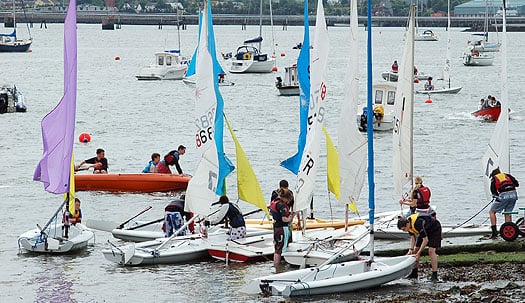
Youth dinghy sailing
RESPECT FOR THE ISA
"A national sailing authority must command the respect of those it serves to do its job efficiently. If it doesn't, it can't." That comment is one of several I have received since the future of dinghy sailing was discussed at the annual general meeting of the Irish Sailing Association. "A long, slow decline in the sport which has, as its root cause, bad policy decisions taken at ISA level," is a serious accusation, carried in reports from the meeting, another aspect of which struck me was that there were just 80 delegates reported present. That number does not strike me as strong representation of sailing clubs around the country.
In recent years it has been comfortable to be told that sailing was expanding rapidly and I have seen more youngsters taking part, but what was raised at the ISA a.g.m. does cause concern: "We need face some realities. It's always dangerous when an organisation starts believing its own public relations." That is another quote I have seen from the meeting. I was out of the country when it took place. A challenge has also been raised by Norman Lee from Wicklow and Bryan Armstrong from Sligo about the inclusion of "power" in the 2006 amendment to the ISA's objectives: "Is it a coincidence that what we see as the rot started around 2006? We make no apology for our interest in the sport of sailing meaning boats powered by the wind and this is what we want the ISA to refocus on."
The ISA has been directly and seriously challenged. It is up to the Association to earn the respect of the sailing public.
UNLUCKY OR CARELESS CAPTAIN?
The most unlucky Ship's Captain about whom I have heard is named Captain Rochfort who commanded two ships which went on the rocks in two months!
Both were steamships and seem to have been pretty close to shore when they hit rocks. The first, the iron paddle steamer Minerva, had a hundred passengers and twenty-two crew aboard and was reported at full speed on the evening of August 29, 1854 en route from Liverpool to Cork but too close to the rocky islands known as the Skerries off Anglesey in Wales. Captain Rochfort ordered a change of course but the vessel struck the Victoria Rocks, took water and began sinking. All aboard got off safely. In subsequent reports, the Captain was praised for his actions as the ship was abandoned.
However the attitude towards him changed two months later when he came under severe criticism and investigations were demanded into his handling of the Ajax, an 800-ton paddle steamer with 400 h.p. engines. She had 300 people aboard en route from London and was also sailing too close to the shore. She struck "well-charted rocks" near Plymouth. Other ships came to the rescue and all aboard were saved.
The two shipwrecks were a disastrous period for the Cork Steam Ship Company which operated services from Liverpool and London. This intriguing story is told by Ronnie Herlihy in his book, 'Tales from Victorian Cork.' The company offices can still be seen on Penrose Quay in the city.
NOW WHAT ABOUT THIS EXAMPLE OF COMMAND?
Having read about Captain Rochfort, I saw this example of command (above) which happened on March 3 in the Straits of Singapore, a very busy transit point for shipping, when a smaller vessel began going to port and getting closer and closer to a bulk carrier. Listen to the audio on the bridge of another ship as the incident was filmed and, despite all the warning soundings of hooters and horns, a collision occurred. The Singapore Coastguard reported that there were no casualties, but there was serious damage to the smaller ship. Investigations are continuing.
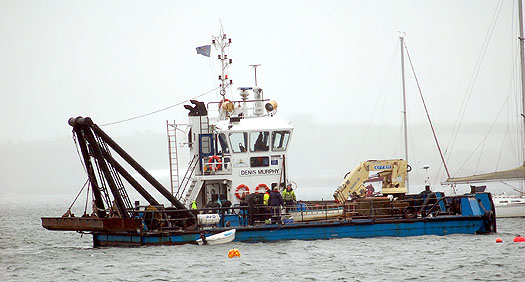
Cork Port vessel inspects mooring buoys
MIND YOUR CORK BUOYS!
If you own a mooring in Cork Harbour take careful note that from this Monday, March 11, Cork Port Company intends to begin removing all "unauthorised, unpaid or illegibly marked moorings". It seems a bit early to be doing this as many leisure boat people don't become active until April/May and some not until June. I put this to the Port Company which responded: "The routine of checking moorings has always been undertaken during this time of year by our staff, but also continues during the season. As you pointed out, it may seem early in the season, however, we find the most suitable time to undertake this activity is when unauthorised moorings are free of boats. We note from past surveys that genuinely responsible mooring holders keep a regular check on their mooring throughout the year."
So, you have been warned!
DUNMORE EAST RNLI CHANGE
In Dunmore East, County Waterford, Michael Griffin has taken over from Joefy Murphy who retired as Coxswain of the local lifeboat after 14 years in the position during which he was involved in many emergency services. Joefy had been on the lifeboat crew since 1997, a great record.
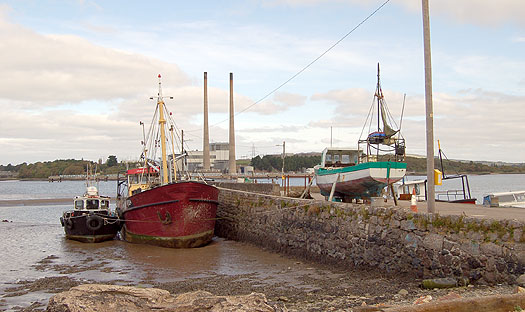
Cheekpoint pier
WATERFORD ESTUARY FISHING DECISION NEEDED
Fishermen in the Waterford Estuary who decided not to take compensation but to hold onto their traditional drift net salmon licences have suggested that salmon stocks in the Nore, Suir and Barrow, which feed the estuary have recovered enough to allow access to their traditional fishery at Passage East, Cheekpoint, Dunmore East, Ballyhack, Duncannon and Arthurstown. The economic and social effects of the banning of drift net fishing on fishing communities in these areas has not been adequately examined.
Email: [email protected]
For regular Marine News follow on Twitter: @Afloatmagazine and @TomMacSweeney
Missing 'Ghost Ship' May Have Sunk In Atlantic
#GhostShip - The Irish Coast Guard is on alert after indications that the missing 'ghost ship' MV Lyubov Orlova may have sunk in the Atlantic as it drifted towards Ireland's coast.
RTÉ News reports that an emergency transponder signal on the vessel that only activates on contact with water was picked up by coastguard monitors last week.
No sign of the ship was detected in satellite images of the area some 1,700km west of Valentia where the signal originated, leading to speculation that the ship has sunk.
But the possibility that the signal device was washed overboard cannot be ruled out.
As previously reported on Afloat.ie, the MV Lyubov Orlova was being transported from Canada to the Caribbean for scrapping in late January when it broke free of its tow-line and went adrift in the Atlantic in the general direction of Europe.
With no lights and its Automatic Identification System (AIS) switched off, it could not be located by conventional means - leading the Irish Coast Guard to collaborate with marine surveillance expert Guy Thomas on his new Global Maritime Awareness system in the hopes of detecting the vessel as it approached Irish waters.
The MV Lyubov Orlova is the sister ship of the polar cruiser Clipper Adventurer, the first ever cruise liner to visit Drogheda Port when it entered the mouth of the Boyne last summer.
Master Plan for Shannon Estuary Launched
#Shannon - The Shannon Foynes Port Company has launched its master plan for the development of port infrastructure and services along the Shannon Estuary.
RTÉ News reports on the 30-year plan, titled Vision 2041, which will involve the construction of a new deepwater birth at Foynes, the development of warehousing and facilities across 300 acres of additional land - and the potential reopening of the Foynes-Limerick railway line, which has lain dormant since 2001.
As one of the deepest waterways in Europe, the estuary is also in prime position to take advantage of the new 'post-panamax' supertanker shipping era, and talks on securing future foreign direct investment as a priority.
As previously reported on Afloat.ie, submissions for the accompanying strategic plan for the development and management of marine-related industry and tourism in the Shannon Estuary region closed last week.
The Draft Strategic Integrated Framework Plan (SIFP) for the Shannon Estuary, the first of its type to be developed in Ireland, identifies a number of strategic sites along the estuary for future possible development in the areas of industry, tourism, energy, fishing and aquaculture and marine-related industry.





























